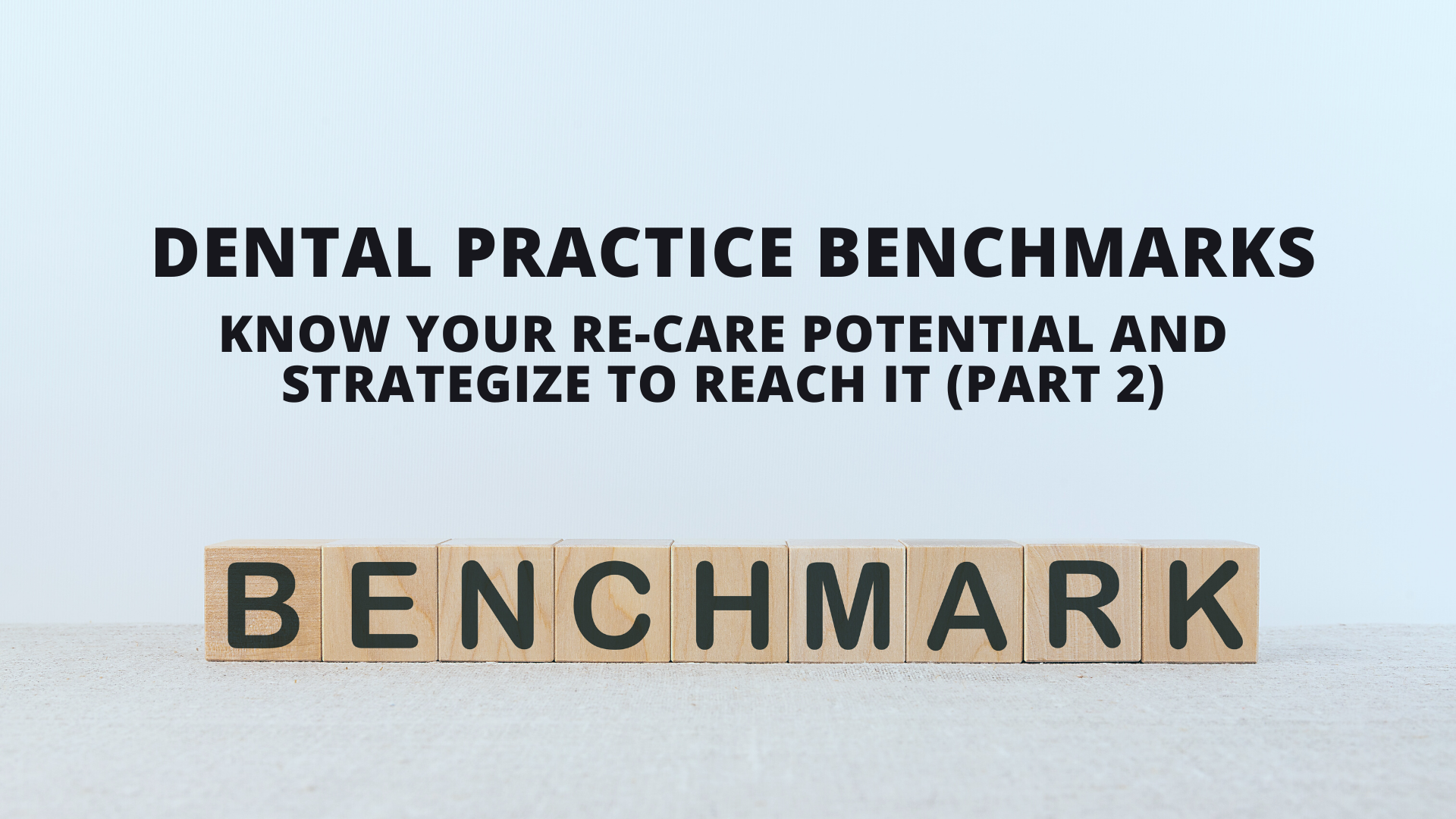Active, ready-to-schedule dental patients are a top practice asset. Even so, it would be unfair to measure practice health without including patients with re-care potential.
We asserted in a related and previous post that your dental practice demographics can be deceiving. That’s true if your mindset is: a patient lost requires a new patient to replace them.
Avoid being caught in the attrition-attraction matrix
The average patient attrition rate hovers around 12 to 15%. Losing patients at that rate naturally prompts new patient attraction strategies.
There’s certainly nothing wrong with attracting new patients. The only caveat is the “cost.”
Wisdom holds that “it’s cheaper to retain a current patient than it is to attract a new one.”
Before you’re sucked into the attraction matrix do some practice data analysis. What you’re looking for are the number of current patients (again, not active but current) who are overdue for an examination.
Welcome to the re-care zone
Re-care or “continuing care” is good for your patients and good for your dental practice revenue stream. Equally so, re-care requires more than the data that backs it up – it requires a system.
Once you have a re-care system in place you’re in a better position to handle and overcome any patient attrition that occurs – without having to rely solely on new patient attraction.
Get in touch with your re-care numbers
Much of re-care revolves around your hygiene department. To clarify, not all re-care is a hygiene visit but it most often starts there, depending on the gap between their last dental examination and cleaning.
Basically, any patient who has exceeded the standard six-month examination and cleaning range qualifies for your re-care strategy.
Let’s crunch the numbers relative to re-care:
Let’s consider that a hygienist could see seven to eight patients in an eight-hour day. Achieving that metric might require scheduling nine to ten patients. The increase would allow for no-shows.
Re-care potential
This data scope shows what’s possible for a month of hygiene appointments. Follow this helpful formula:
Active patients ➗ 9 = Monthly Hygiene Potential
Your active re-care potential can be determined by this equation:
The average number of monthly re-care patients ✖️ 9
If your practice is above average in re-care:
The number of active patients ➕ the number of active re-care patients will be within 10% of each other.
Seeing your re-care potential is cause for a simple re-care strategy
As mentioned, your hygienists are front-line to your overall re-care system. Place your focus there, follow the formulas, and put a strategy in place or refresh the one you have.
Think “next”
The best leverage for the next appointment is the current one. Your hygienists are key to that conversation.
Language and general narrative (while they’re in the chair) should direct them towards their next appointment (typically six months out, of course). Imply a sort of natural, reflexive assumption that they/you will see them in six months.
Stay on their “radar”
It’s naive to think that a patient would naturally remember a re-care appointment. Life, schedules, generally busyness make doing so somewhat impossible.
- Stay connected with routine reminders.
- Increase the “volume” beginning a month out from their “next.”
- Use patient preferred methods to stay connected (e.g. email, text message/SMS, phone, postcard mailers, etc).
”Flip-the-switch”
We’re talking automation. Its capabilities will enable your team to stay on top of the routine tasks that support re-care.
- Automate reminder emails, text messages, and mailer schedules.
- Automate follow-up communications to keep important appointment details in front of patients.
An effective re-care system is built on a dental practice culture that keeps patients informed about their oral health – especially preventive care. Your success is also enhanced by the tools you select to accomplish that and track your progress.
Choose the tools that help you with re-care strategies and more as a DSO, group practice, or solo private practice
The Jarvis Analytics platform helps assure that you’re tracking the important metrics and staying on track in your daily workflows and overall practice or DSO goals.
Jarvis…
- Integrates seamlessly with your chosen practice management software/platform
- Presents the metrics you want and need in an easy-to-view dental dashboard that reduces data complexity for growing dental practices, dental groups, and DSOs
Experience Jarvis in action. Request a demo today!
Or…
Contact us for more information about data tracking that leads to profitability
LIKE WHAT YOU SEE & READ?
Join thousands of other people, subscribe to our newsletter, and get valuable business tips delivered right to your inbox.


